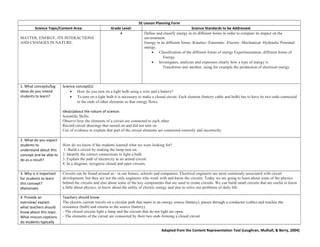The document is a lesson planning form focused on teaching students about electrical circuits and energy transformation. It outlines key learning objectives, activities to engage students, common misconceptions, and assessment methods. The lesson emphasizes the importance of understanding circuits in everyday life and includes hands-on experimentation with components like batteries, cables, and light bulbs.



